| 9K34 Strela-3 | |
|---|---|
 A 9K34 Strela-3 (SA-14) missile and launch tube. | |
| Type | Man-portable air-defense systems (MANPADS) |
| Place of origin | Soviet Union |
| Service history | |
| In service | 1974–present |
| Used by | See Operators |
| Wars | |
| Production history | |
| Manufacturer | KBM, Kolomna |
| Specifications | |
| Mass |
|
| Length | 1.47 metres (4.8 ft) |
Operational range | 4,500 metres (14,800 ft) |
| Flight altitude | 1,800 metres (5,900 ft) vs. jets 3,000 metres (9,800 ft) vs. slow moving targets |
| Maximum speed | 470 metres per second (1,700 km/h; 1,100 mph) |
The 9K34 Strela-3 (Russian: 9К34 «Стрела-3», 'arrow', NATO reporting name: SA-14 Gremlin) is a man-portable air defense missile system (MANPADS) developed in the Soviet Union as a response to the poor performance of the earlier 9K32 Strela-2 (SA-7 Grail) system. The missile was largely based on the earlier Strela 2, and thus development proceeded rapidly. The new weapon was accepted into service in the Soviet Army in January 1974.
Description
_Manpads_Strela-3_9k34_(2107_D1999480).jpg.webp)
The most significant change over the Strela 2 was the introduction of an all-new infra-red homing seeker head. The new seeker worked on FM modulation (con-scan) principle, which is less vulnerable to jamming and decoy flares than the earlier AM (spin-scan) seekers, which were easily fooled by flares and even the most primitive infrared jammers. The new seeker also introduced detector element cooling in the form of a pressurized nitrogen bottle attached to the launcher.
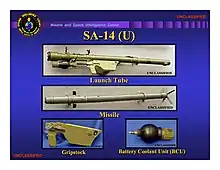
The effect of cooling was to expand the seeker's lead sulphide detector element's sensitivity range to longer wavelengths (slightly over 4 μm as opposed to 2.8 μm of uncooled PbS elements). In practice this made possible the tracking of cooler targets over longer ranges, and enabled forward-hemisphere engagement of jets under favourable circumstances. The seeker also had better tracking rate, enabling the missile to track maneuvering of fast and approaching targets.
A negative side effect from the aforementioned improvements was increased missile weight, which caused a slight decrease in the kinematic performance of the original Strela-2 (SA-7). Against relatively slow, low-altitude battlefield air threats the overall effectiveness was much improved.
Strela-3 missiles have been exported to over 30 countries.
The original Strela-3 missile was the 9M36. The follow-on to the Strela-3 was Igla.
The naval version of this missile has the NATO reporting name of SA-N-8.
Operational history
Iraq
On 22 November 2003 an Airbus A300 cargo plane was hit by a Strela-3 missile after takeoff from Baghdad International Airport, but managed to land safely despite losing hydraulic power.
On 6 May 2006, a British Westland Lynx AH.7 of the Royal Navy from 847 Squadron was shot down with a Strela-3 over Basra, killing five crewmen and crashing into a house.[1]
Georgia
During the War in Abkhazia (1992–1993), a Russian Mi-8 helicopter was shot down by a Georgian Army SA-14 on December 14, 1992, resulting in the death of 3 crew and 58 passengers, most of them Russian refugees. A Georgian Air Force Su-25 was shot down over Nizhnaya Eshera on 4 July 1993 by SA-14,[2] and several other aircraft on both sides may have been shot down by SA-14s.[3]
Former Yugoslavia
A British Sea Harrier FRS1 of 801 Naval Air Squadron, operating from aircraft carrier HMS Ark Royal on 16 April 1994, was shot down during its attack on two Serbian T-55 tanks in Bosnia. The pilot, Lieutenant Nick Richardson, ejected and landed in territory controlled by friendly Bosniaks.
DRC Congo
A Zimbabwe Air Force Il-76 was shot down by Congolese rebels using an SA-14 on 11 October 1998 during the Second Congo War, resulting in the death of 40 troops and crew.[4]
Afghanistan
SA-14s used by the Northern Alliance are credited with having shot down 8 Taliban MiG-21 and Su-22 fighters during the Taliban's 2000 offensive against Taloqan.[5]
Turkey
A SA-14 (9K34 Strela-3) MANPADS was found during Operation Claw (2019-2020) in June 2019 in the Hakurk region of northern Iraq belonging to the PKK.
Operators
Current operators
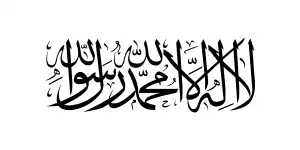 Afghanistan
Afghanistan
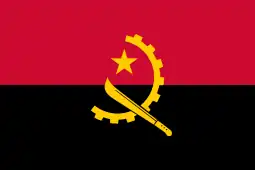 Angola[7]
Angola[7]
 Azerbaijan[7]
Azerbaijan[7]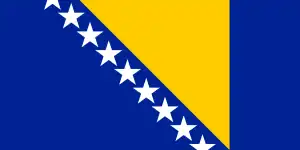 Bosnia and Herzegovina[7]
Bosnia and Herzegovina[7]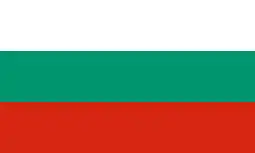 Bulgaria[9]
Bulgaria[9]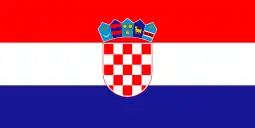 Croatia[7]
Croatia[7]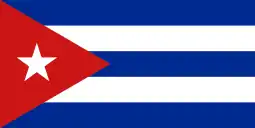 Cuba[7]
Cuba[7]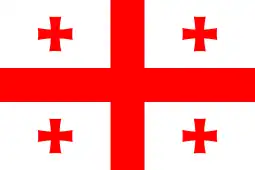 Georgia – used during Georgian civil war.[3]
Georgia – used during Georgian civil war.[3] Hezbollah[6]
Hezbollah[6]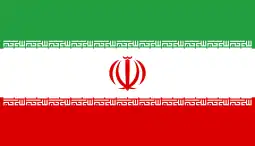 Iran[7]
Iran[7]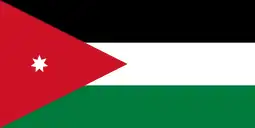 Jordan[7]
Jordan[7]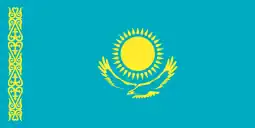 Kazakhstan[10]
Kazakhstan[10] Kurdistan Workers' Party[11]
Kurdistan Workers' Party[11] Nicaragua[7]
Nicaragua[7]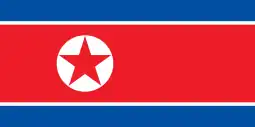 North Korea[7]
North Korea[7] Peru[7]
Peru[7]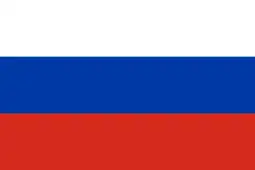 Russia[7]
Russia[7] Sierra Leone
Sierra Leone
 Syria[7]
Syria[7]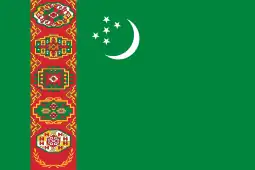 Turkmenistan[7]
Turkmenistan[7]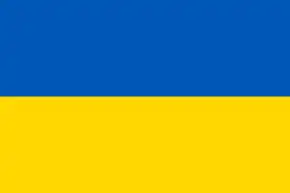 Ukraine[12]
Ukraine[12] Houthis[13]
Houthis[13]
Former operators
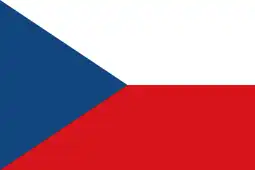 Czechoslovakia – never acquired to military service[9]
Czechoslovakia – never acquired to military service[9] East Germany – never acquired to military service[9]
East Germany – never acquired to military service[9] Finland[8]
Finland[8] FMLN[8]
FMLN[8]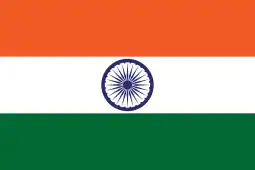 India[8]
India[8].svg.png.webp) Iraq[8]
Iraq[8] Hungary – never acquired to military service[9]
Hungary – never acquired to military service[9] Liberation Tigers of Tamil Eelam[6]
Liberation Tigers of Tamil Eelam[6] Poland – 100 bought in the 1980s, but never acquired to military service.[9]
Poland – 100 bought in the 1980s, but never acquired to military service.[9] Soviet Union[14]
Soviet Union[14] United Arab Emirates – Used by the Abu Dhabi Royal Guard.[8]
United Arab Emirates – Used by the Abu Dhabi Royal Guard.[8]
Comparison chart
| System | 9K32M Strela-2M (missile: 9M32M) | 9K34 Strela-3 (missile: 9M36)[15] | FIM-43C Redeye[16] |
|---|---|---|---|
| Service entry | 1968 | 1974 | 1968 |
| Mass, full system, ready to shoot | 15 kg | 16 kg | 13.3 kg |
| Weight, missile | 9.8 kg | 10.3 kg | 8.3 kg |
| Length | 1.44 m | 1.47 m | 1.40 m |
| Warhead | 1.15 kg (0.37 kg HMX) directed-energy blast fragmentation | 1.17 kg (0.39 kg HMX) directed-energy blast fragmentation, including a 20g secondary charge to set off remaining rocket propellant | 1.06 kg M222 (0.36 kg HTA-3) blast fragmentation |
| Seeker type | AM-modulated (spin scan), uncooled PbS detector element (1–2.8 μm sensitivity range). Tail-chase only. | FM-modulated (con scan), nitrogen-cooled PbS detector element (2–4.3 μm sensitivity range). Limited forward hemisphere (all-aspect) capability | AM-modulated, gas-cooled PbS detector element. Tail-chase only. |
| Maximum range | 4,200 m | 4,500 m | 4,500 m |
| Speed | 430 m/s | 470 m/s | 580 m/s |
| Target's maximum speed, approaching/receding | 150/260 m/s | 310/260 m/s | –/225 m/s |
| Engagement altitude | 0.05–2.3 km | 0.03–3.0 km | 0.05–2.7 km |
See also
Citations
- ↑ "RAF Pursues Common DAS Demonstrator".
- ↑ "2005". Archived from the original on 2015-09-23. Retrieved 2013-04-20.
- 1 2 Cooper, Tom. "Georgia and Abkhazia, 1992-1993: the War of Datchas". ACIG.org. Archived from the original on 3 March 2008. Retrieved 18 February 2013.
- ↑ Cooper, Tom. "Zaire/DR Congo, 1980-2001". ACIG.org. Retrieved 18 February 2013.
- ↑ Cooper, Tom. "Afghanistan, 1979-2001; Part 2". ACIG.org. Retrieved 18 February 2013.
- 1 2 3 4 5 "Guided light weapons reportedly held by non-state armed groups 1998-2013" (PDF). Small Arms Survey. March 2013. Archived from the original (PDF) on August 18, 2014.
- 1 2 3 4 5 6 7 8 9 10 11 12 13 International Institute for Strategic Studies (IISS) (14 February 2018). "The Military Balance 2018". The Military Balance. 118.
- 1 2 3 4 5 6 Cullen, Tony; Foss, C.F. (1 March 1992). Jane's Land-based Air Defence 1992-93 (5 ed.). Jane's Information Group. pp. 40–41. ISBN 978-0710609793.
- 1 2 3 4 5 "samolotypolskie.pl - 9K34 (9M36) "Strzała-3"". www.samolotypolskie.pl.
- ↑ Small Arms Survey (2012). "Blue Skies and Dark Clouds: Kazakhstan and Small Arms". Small Arms Survey 2012: Moving Targets. Cambridge University Press. p. 131. ISBN 978-0-521-19714-4. Archived from the original (PDF) on 2018-08-31. Retrieved 2018-08-30.
- ↑ "SA-14 (9K34 Strela-3) MANPADS was found today in Hakurk belonging to the PKK. Additionally, multiple caves, shelters, ammunition and IED's have been found and destroyed in the last couple of days". twitter.com. Retrieved 8 October 2019.
- ↑ "Additional air defense systems are being sent to Ukraine, US official says". 16 March 2022.
- ↑ International Institute for Strategic Studies (15 February 2023). The Military Balance 2023 (1st ed.). Routledge. p. 363. ISBN 978-1032508955.
- ↑ International Institute for Strategic Studies (1989). The Military Balance, 1989-1990. London: Brassey's. p. 34. ISBN 978-0080375694.
- ↑ Istorija sozdanija i razvitija vooruzhenija i vojennoi theniki PVO suhoputnyh voisk Rossii
- ↑ "General Dynamics FIM-43 Redeye". www.designation-systems.net.
General and cited references
- Petukhov, Sergei I.; Shestov I.V. (1998). Istorija sozdanija i razvitija vooruzhenija i vojennoi tehniki PVO suhoputnyh voisk Rossii, 1.-2 [History of design and development of missile systems and military systems of AAW of Russian Land Forces]. VPK Publishing.
- "Directory of U.S. Military Rockets and Missiles, FIM-43". Archived from the original on 17 April 2008. Retrieved 2008-04-23.
External links
 Media related to Strela-3 at Wikimedia Commons
Media related to Strela-3 at Wikimedia Commons